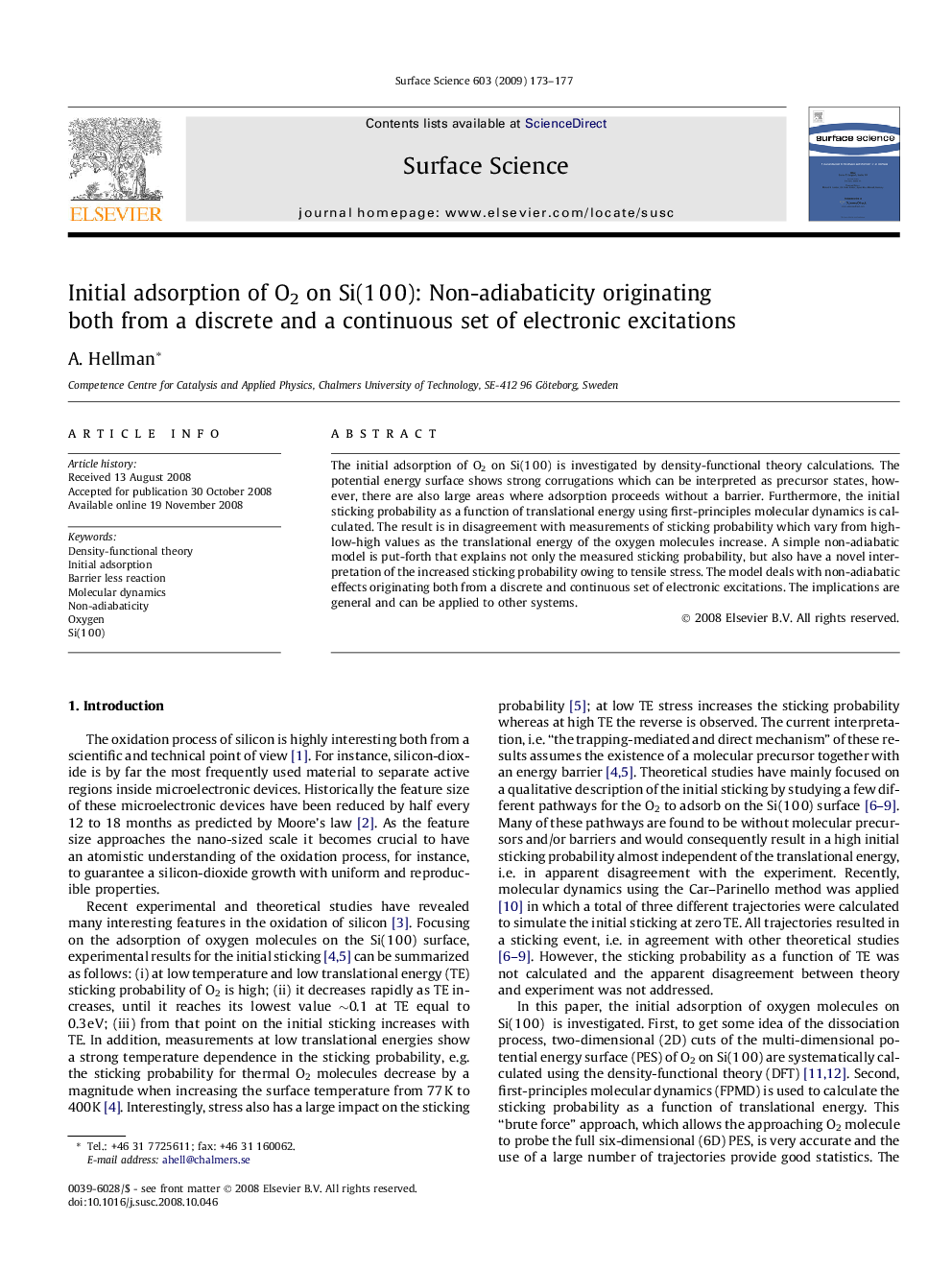| Article ID | Journal | Published Year | Pages | File Type |
|---|---|---|---|---|
| 5424773 | Surface Science | 2009 | 5 Pages |
Abstract
The initial adsorption of O2 on Si(1Â 0Â 0) is investigated by density-functional theory calculations. The potential energy surface shows strong corrugations which can be interpreted as precursor states, however, there are also large areas where adsorption proceeds without a barrier. Furthermore, the initial sticking probability as a function of translational energy using first-principles molecular dynamics is calculated. The result is in disagreement with measurements of sticking probability which vary from high-low-high values as the translational energy of the oxygen molecules increase. A simple non-adiabatic model is put-forth that explains not only the measured sticking probability, but also have a novel interpretation of the increased sticking probability owing to tensile stress. The model deals with non-adiabatic effects originating both from a discrete and continuous set of electronic excitations. The implications are general and can be applied to other systems.
Related Topics
Physical Sciences and Engineering
Chemistry
Physical and Theoretical Chemistry
Authors
A. Hellman,
